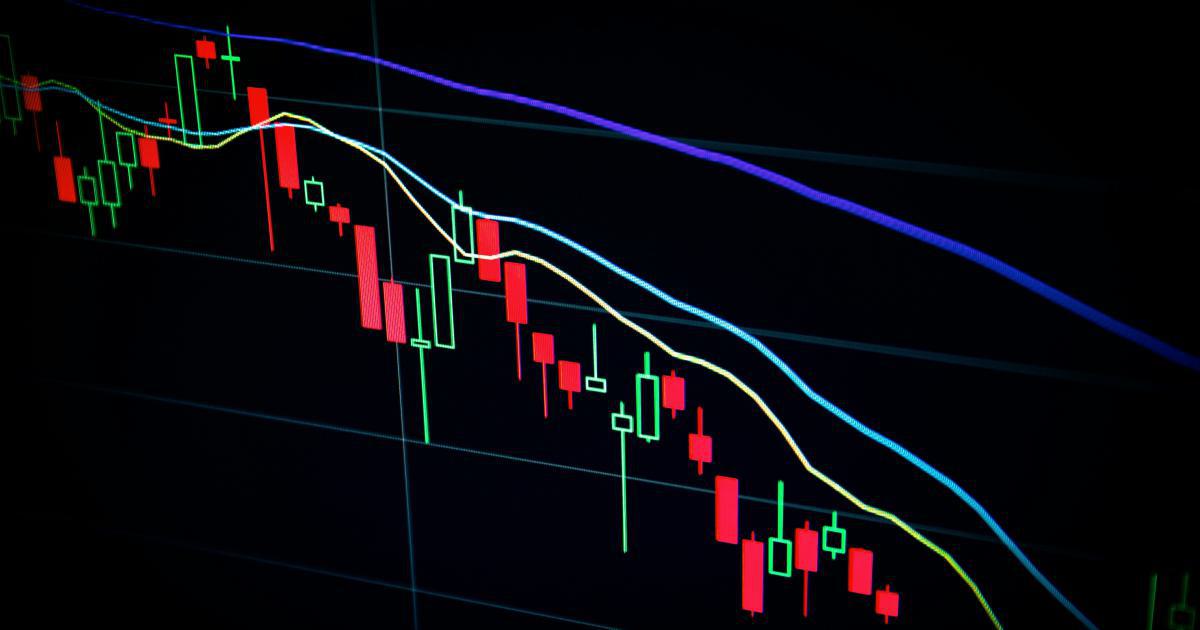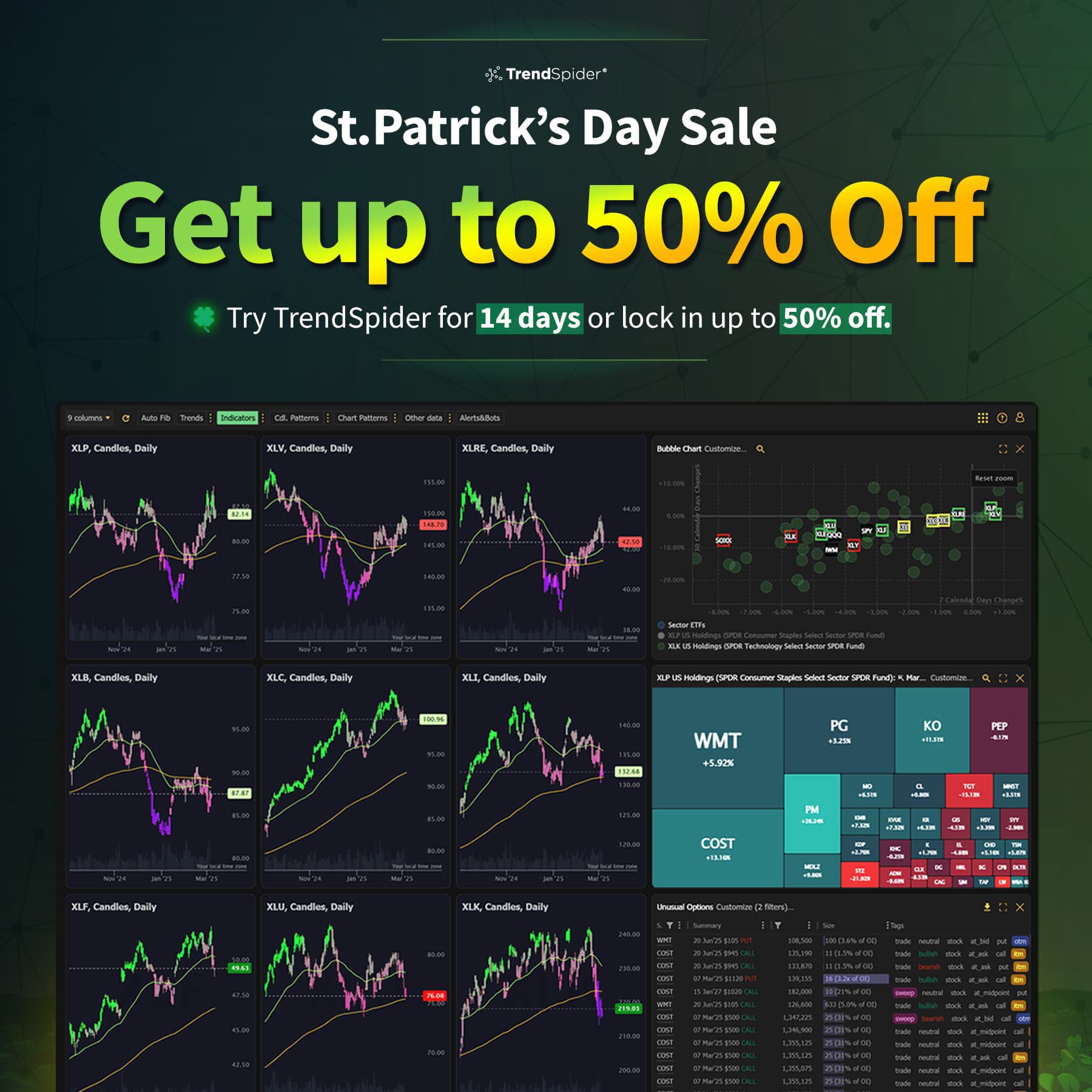Event-Driven vs. Trend-Following Algorithms: Key Differences

In the world of algorithmic trading and automated decision-making, two popular strategies emerge: event-driven vs. trend-following algorithms. Both these methods have a unique approach to interpreting market signals and executing trades, yet they differ fundamentally in their design, execution, and risk management. In this comprehensive article, we explore the intricate workings of event-driven and trend-following algorithms, assessing their key differences, advantages, challenges, and real-world applications. In doing so, we delve deep into the underlying mechanics of each strategy, providing a robust framework for traders, technologists, and decision-makers to optimize their investment portfolios.
The discussion on event-driven vs. trend-following algorithms is timely in an era where markets are frequently disrupted by unexpected events or exhibit long-term trends influenced by broader economic climates. Whether you're an experienced trader or a newcomer to algorithmic strategies, understanding how these algorithms operate can transform the way you approach market analysis and risk management.
Introduction to Algorithmic Strategies
Algorithmic trading has evolved extensively over the last few decades, spurred by advancements in computational speed, data availability, and sophisticated statistical models. Historically, traders relied on intuition and manual decision-making, but modern markets now depend on automated algorithms capable of reacting to both quantitative data and qualitative events.
The Role of Algorithms in Modern Trading
Algorithms are programmed to execute predefined instructions, and they outperform human counterparts in terms of reaction times and the ability to digest vast amounts of market data. Two primary categories—event-driven algorithms and trend-following algorithms—address different aspects of market behavior. Event-driven algorithms are designed to capture short-term anomalies, such as news releases or sudden market shocks. In contrast, trend-following algorithms capitalize on longer-term market movements, following the prevailing trend until signals indicate a possible reversal.
Both approaches offer unique benefits, but their effectiveness is highly dependent on the market environment. For instance, during periods of high volatility driven by unpredictable news, event-driven algorithms often shine. Conversely, in stable, trending markets, trend-following strategies usually perform better as they ride the prevailing market direction. Investors and analysts must therefore select the right algorithmic approach based on their risk tolerance, market outlook, and strategic goals.
Defining Event-Driven Algorithms
Event-driven algorithms are designed to detect and react to specific events in real time. Such events might include economic data releases, corporate earnings reports, geopolitical events, or sudden shifts in market volatility. The core of this strategy lies in identifying causality: when an event occurs, algorithms execute trades that are statistically correlated with the market reaction to that event.
Key characteristics of event-driven algorithms:
- Real-Time Reaction: They operate on short timeframes, often within milliseconds to seconds.
- Event Recognition: The underlying algorithms must distinguish between noise and actual events.
- Risk Management: Due to the unpredictability of events, they often include stringent risk management protocols.
- Data Dependency: They rely heavily on live news feeds, social media sentiment, and real-time data streams.
Defining Trend-Following Algorithms
In contrast, trend-following algorithms focus on longer-term price movements rather than instantaneous events. This strategy is built on the belief that prices tend to move in trends, which can be upward, downward, or sideways. By identifying and riding these trends, the algorithm seeks to profit as long as the trend persists.
Key characteristics of trend-following algorithms:
- Signal Confirmation: They rely on technical indicators like moving averages, momentum oscillators, and relative strength indexes (RSIs).
- Delayed Reaction: These algorithms often react slower compared to event-driven systems, waiting for confirmation before entering a trade.
- Simplicity and Reliability: The methodology is relatively straightforward—buy when the market is in an upward trend and sell during a downward trend.
- Trend Persistence: These strategies work best in markets where trends are clear and extended over time.
Historical Context and Evolution
The evolution of algorithmic trading can be traced back to the mid-20th century, when early computer systems first began to process financial data. As computing power grew, so did the sophistication of trading algorithms. Initially, algorithms were relatively simple logic-based systems that executed trades based solely on pre-established rules. With time, however, the market’s complexity demanded more adaptive systems—leading to the development of both event-driven and trend-following strategies.
The Rise of Event-Driven Trading
During the 1980s and 1990s, significant geopolitical events and economic reforms compelled traders to seek out strategies that could quickly respond to market-moving news. The explosion of digital media and real-time data feeds further accelerated the adoption of event-driven algorithms. Today, these systems harness artificial intelligence (AI) and machine learning techniques to sift through a massive amount of unstructured data, making sense of sentiment indicators and news tickers almost instantaneously.
The Popularity of Trend-Following Strategies
Trend-following strategies, on the other hand, became popular during periods of steady economic growth. Investors observed that markets rarely move in random directions; instead, they exhibit inertia, with trends that can persist from weeks to months. This observation laid the groundwork for strategies that maximize gains by following the momentum of market movements. Over time, advanced statistical models have refined these strategies, reducing false signals while enhancing profitability.

Core Differences: Event-Driven vs. Trend-Following Algorithms
Understanding the core differences between event-driven vs. trend-following algorithms requires an exploration of their underlying methodologies, risk profiles, data dependencies, and situational effectiveness.
1. Data Input and Processing
Event-Driven Algorithms:
These algorithms are highly reliant on real-time data. They continuously monitor news feeds, economic announcements, and social media platforms to detect sudden shifts in market sentiment. Because data is processed in near real-time, event-driven systems are optimized for latency, ensuring that they execute trades within fractions of a second once an event triggers a signal.
Trend-Following Algorithms:
Trend-following systems depend on historical price data with an emphasis on identifying patterns over longer timeframes. Data smoothing techniques, such as moving averages and Bollinger Bands, are often employed to filter out noise. This reliance on historical data means that while these algorithms are less reactive to immediate market shocks, they excel in capturing consistent, directional moves.
2. Reaction Speed
Event-Driven:
Speed is essential. These algorithms must make split-second decisions as news or events unfold, often taking advantage of market inefficiencies that exist only for brief moments. High-frequency trading (HFT) infrastructures, co-located servers, and direct market access are commonly associated with event-driven strategies.
Trend-Following:
In contrast, trend-following algorithms do not require such lightning-fast reaction times. Their emphasis is on confirming a trend over a period of time before executing trades. This approach reduces the risk of overreacting to short-term volatility and helps prevent whipsaw losses.
3. Risk Management Strategies
Event-Driven:
Risk management in event-driven trading is both challenging and critical. Because market events can lead to rapid price fluctuations, these algorithms incorporate stop-loss orders, dynamic hedging, and position scaling to mitigate adverse impacts. The systems are designed to protect capital during highly volatile market periods.
Trend-Following:
Trend-following systems tend to adopt a more gradual risk management strategy. They often use trailing stops and limit orders to protect gains while allowing positions to build profit as trends continue. Risk is managed by adhering to clearly defined entry and exit criteria based on technical signals. This strategy minimizes the impact of short-term noise on overall performance.
4. Market Conditions and Suitability
Event-Driven:
Event-driven algorithms thrive in markets that are highly volatile and reactive to news. Their ability to process and act on new information quickly makes them ideal during periods of economic turmoil, corporate announcements, or geopolitical instability. However, in calm market conditions, these algorithms might struggle to find profitable opportunities.
Trend-Following:
Trend-following algorithms perform best in markets where trends are well-defined and sustained. These strategies are beneficial during bull markets with steady upward momentum or bear markets with prolonged downward trends. In markets characterized by high levels of noise and volatility without clear directional movement, trend-following strategies may experience frequent false signals.
5. Complexity and Implementation
Event-Driven:
The complexity of event-driven algorithms lies in their ability to interpret and react to qualitative data. Developing a robust event-driven system requires expertise in natural language processing (NLP) and sentiment analysis, in addition to traditional quantitative methods. Integration with external data sources and real-time feeds further complicates the implementation process.
Trend-Following:
Trend-following systems are comparatively simpler to implement. Their reliance on technical indicators and historical price data means that the algorithms are easier to design, test, and optimize. This relative simplicity makes trend-following strategies popular among a broad range of traders, from novices to institutional investors.
Real-World Applications and Case Studies
Both event-driven and trend-following algorithms have been successfully applied across various financial markets and asset classes. Exploring concrete examples helps illustrate the strengths and limitations associated with each strategy.
Case Study 1: Event-Driven Trading in Corporate Earnings
Consider a scenario where a multinational corporation announces unexpectedly strong quarterly earnings. An event-driven algorithm, tuned to monitor earnings reports, detects the surge and quickly executes a buy order. The reaction time is crucial here—by acting within seconds of the announcement, the algorithm captures much of the subsequent price jump. This approach is especially effective in today’s fast-moving markets where delayed reaction can result in lost opportunities.
In another example, during periods of merger or acquisition news, event-driven algorithms have been known to exploit arbitrage opportunities. They may buy shares in the target company while shorting shares in the acquiring company if the market perceives the deal differently than the algorithm’s statistical model predicts. Such strategies have been refined over time, incorporating complex risk mitigation measures to avoid sudden market reversals.
Case Study 2: Trend-Following in Commodity Markets
In contrast, trend-following algorithms have found extensive use in commodity markets. Consider the case of a rising oil price over several months. A trend-following system, using a combination of moving averages and momentum indicators, would confirm the upward trend before entering a long position. As the oil prices continue to climb, the algorithm gradually increases the position size, ride the trend, and eventually secures profits by trailing stop orders.
Similarly, during prolonged bear markets, trend-following systems have helped investors limit exposure by quickly reversing positions when a trend shift is confirmed. This automated process ensures that decisions are driven by statistical signals rather than human emotion—a critical advantage in periods of market stress.

Comparing Performance Metrics
For investors considering the deployment of event-driven vs. trend-following algorithms, analyzing performance metrics is paramount. Performance evaluation is not solely about profit and loss figures; it also involves understanding the risk-adjusted returns, drawdown profiles, and the consistency of returns over time.
1. Return on Investment (ROI)
Event-Driven:
ROI in event-driven strategies can be highly variable, largely due to the unpredictable nature of market events. When events are favorable, the returns can be exceptionally high, but during quieter periods, the lack of significant events may result in lower performance.
Trend-Following:
Trend-following algorithms tend to offer a more stable ROI over longer terms. By investing in prolonged trends, these systems can capture steady profits without the extreme fluctuations that may be common in event-driven scenarios. However, in choppy or sideways markets, trend-following strategies may generate false signals, potentially impacting the ROI.
2. Volatility and Drawdowns
Event-Driven:
Due to their exposure to rapid market movements, event-driven systems may experience higher volatility and deeper drawdowns if not managed carefully. Risk management is therefore critical, and strategies often include hedging techniques to cushion against sharp downturns.
Trend-Following:
While trend-following systems are not immune to volatility, their design inherently aims to absorb market fluctuations by sticking with sustained trends. This can result in lower overall volatility and smaller drawdowns, provided that market trends remain in play. However, during sudden reversals in trending markets, even trend-following systems can suffer from significant losses if stop-loss orders are not effectively executed.
3. Sharpe Ratio and Risk-Adjusted Returns
Investors often measure risk-adjusted returns using metrics like the Sharpe ratio. Trend-following strategies, with their smoother performance curves, often exhibit higher Sharpe ratios compared to event-driven strategies. The consistent nature of trends, when present, enables investors to achieve a more favorable balance between returns and volatility.
Event-driven systems, while capable of high returns, generally present more variability. Consequently, their Sharpe ratios may be lower unless paired with robust risk management frameworks. These performance metrics become a vital part of the due diligence process when selecting an algorithmic strategy.
Actionable Solutions and Expert Tips
For practitioners and traders looking to implement event-driven vs. trend-following algorithms, a systematic approach is essential. Here are some step-by-step recommendations:
Step 1: Define Trading Objectives
- Clearly delineate whether the primary goal is to capture quick market anomalies or to ride long-term trends.
- Evaluate the market conditions and risk tolerance of your portfolio.
Step 2: Data Acquisition and Integration
- For event-driven algorithms, establish connections with reliable real-time news providers and social sentiment analytics.
- For trend-following systems, secure historical price data and technical analysis tools capable of generating reliable indicators.
Step 3: Algorithm Design and Backtesting
- Develop multiple prototypes of algorithms and rigorously backtest them against historical data. Adjust parameters using both in-sample and out-of-sample testing methods.
- Consider the nuances in data required for each approach and calibrate the algorithm to filter out market noise that could lead to false signals.
Step 4: Risk Management Framework
- Implement robust risk management tools, such as stop-loss orders, dynamic hedging, and position sizing protocols. This step is crucial for both strategies.
- Monitor key performance indicators (KPIs) such as maximum drawdown, Sharpe ratio, and ROI during the backtesting phase.
Step 5: Continuous Monitoring and Optimization
- Market conditions are dynamic and require ongoing algorithmic adjustments. Establish a routine to review performance metrics and refine model parameters periodically.
- Leverage machine learning techniques where feasible to enhance adaptability. For instance, an algorithm may continuously learn from market data, refining its parameters for improved signal reliability.
Step 6: Integration of Both Strategies
- Consider hybrid strategies that combine the strengths of both event-driven and trend-following algorithms. This can help balance the risks and returns by capturing both immediate reactions and long-term trends.
- Diversify your trading portfolio by allocating capital between the two approaches, ensuring that one strategy may compensate if the other underperforms under certain market conditions.
Adopting these actionable steps not only improves the viability of your trading algorithms but also offers insights into market dynamics, risk management, and the continuous evolution of algorithmic trading.

Future Trends and Innovations
As the financial industry evolves, so do the strategies and technologies underlying algorithmic trading. Future trends indicate that both event-driven and trend-following algorithms will be enhanced by emerging technologies such as artificial intelligence, machine learning, and big data analytics.
Integration of Artificial Intelligence
AI is poised to revolutionize algorithmic trading by providing more accurate data analysis and decision-making capabilities. For event-driven systems, advanced natural language processing (NLP) and sentiment analysis tools can improve the accuracy of event detection, enabling the algorithms to differentiate between meaningful events and irrelevant noise. Conversely, trend-following models can benefit from AI-driven pattern recognition, allowing them to better identify emerging trends and filter out false positives.
Big Data and Real-Time Analytics
The volume of market data is doubling at unprecedented speeds. With the advent of big data analytics, both event-driven and trend-following algorithms will have access to highly granular datasets. This data explosion will facilitate more precise forecasting, better risk management, and enhanced adaptability to market conditions. As algorithms are fed more detailed and diverse datasets, the predictive accuracy of these systems is expected to improve, potentially narrowing the gap between the two strategies.
Hybrid Algorithms and Multi-Strategy Portfolios
Looking ahead, the convergence of event-driven and trend-following strategies appears inevitable. Multi-strategy portfolios that integrate both approaches allow traders to capitalize on a wider range of market conditions. Such hybrid algorithms can dynamically adjust their strategies based on real-time assessments of market volatility and trend continuity. For example, during periods of low volatility, a hybrid algorithm might lean more on trend-following signals, whereas bursts of significant news events could trigger an event-driven response.
Enhanced Risk Management through Technology
Emerging technologies, including blockchain for enhanced transparency and decentralized data sources, promise to improve risk management processes in algorithmic trading. These technologies could ensure more secure data transmission and accurate time-stamping of events, benefiting both event-driven and trend-following systems by reducing errors and inefficiencies.

Synthesis and Strategic Considerations
Selecting between event-driven vs. trend-following algorithms is less about choosing a “superior” method and more about aligning the strategy with your market outlook, risk tolerance, and technological capabilities. The critical aspects that differentiate these approaches include:
- Data dependency and processing speed: Event-driven algorithms require real-time inputs and operational speed, while trend-following systems leverage historical data and patience.
- Reaction time and risk management: Speed is paramount for event-driven strategies, whereas trend-following prioritizes sustained market movement and gradual risk exposure.
- Complexity and implementation: Event-driven systems tend to be more technically challenging to build and maintain compared to the relatively simple and robust trend-following models.
Strategically, many sophisticated traders opt to integrate both methods into their portfolios. By doing so, they can harness the unique strengths of each approach. For instance, during market upheavals triggered by geopolitical or economic events, event-driven systems can seize opportunities rapidly. Meanwhile, in stable market conditions characterized by clear directional moves, trend-following algorithms are likely to secure consistent gains.
Careful analysis of market conditions, ongoing monitoring, and frequent performance evaluation are essential to ensure that the implemented strategy remains adaptive. Given the rapid evolution in financial technology, staying updated on the latest trends and continuously refining your models is imperative to maintain competitiveness in global markets.
Conclusion
The nuanced world of algorithmic trading offers a diverse array of strategies, with event-driven vs. trend-following algorithms standing out as two distinctly effective methods. While event-driven algorithms excel in capturing rapid, real-time market shifts due to significant external events, trend-following algorithms leverage the market’s inertia by riding sustained trends. Both strategies exhibit their own set of advantages, challenges, and ideal contexts for deployment.
Ultimately, the choice between these strategies depends on your trading objectives, technological infrastructure, and market conditions. By understanding the detailed mechanics and performance metrics of each approach, traders can better tailor their methodologies to the prevailing market environment. Whether you choose a singular strategy or a well-balanced hybrid approach, the key lies in continuous adaptation and embracing technological advancements that further enhance decision-making capabilities.
The ongoing evolution marked by artificial intelligence, big data, and enhanced computational power promises a bright future for algorithmic trading as these methodologies become more refined and integrated. Understanding and leveraging the differences between event-driven vs. trend-following algorithms can, therefore, be the cornerstone of building a resilient and profitable trading strategy in an increasingly competitive landscape.
In summary, a deep grasp of these algorithmic strategies equips traders with the insights necessary to navigate volatile markets and make informed, calculated decisions that align with long-term investment goals. The journey may be challenging due to the inherent complexity and rapid pace of technological change, but the rewards, in terms of enhanced performance and risk management, are well worth the effort.
Unleash the Power of Automated Trading Analysis
Are you struggling to keep up with the fast-paced trading world? TrendSpider empowers you with cutting-edge tools for optimal strategy execution.
Our automated technical analysis suite eliminates guesswork, backtests strategies, and delivers real-time alerts, saving you valuable time and effort.
Isla Wyndham
52 posts written





